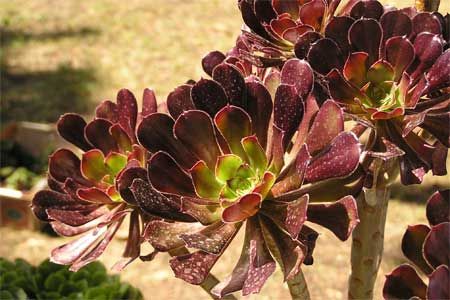Succulents are known for being low-maintenance, but they’re also extremely versatile. Depending on the type you select, they can be suitable for both indoor and outdoor spaces and are excellent for beginner gardeners.
In this guide, we’ll explore various succulent types, their care requirements, and how to incorporate them into your home and garden.
Popular Indoor Succulent Varieties
Many succulent species thrive indoors, making them excellent choices for home decor and office spaces.
Echeveria

Echeveria is a type of rosette-forming succulents known for their attractive, symmetrical shapes. These plants come in various colors, including green, blue-green, and even pink or purple hues. Echeveria x imbricata, for example, features soft gray-green leaves in a rosette pattern and can produce red and yellow blooms in summer.
Crassula Ovata (Jade Plant)
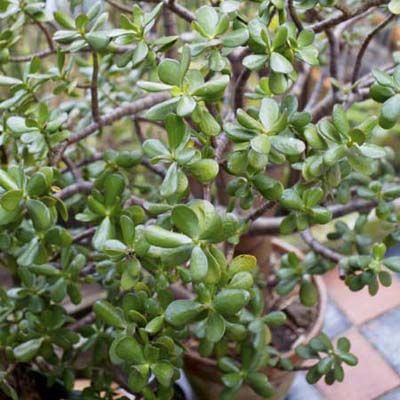
The Jade plant, or Crassula ovata, is a popular choice for a low-maintenance potted plant. It can grow up to 6 feet tall and features green, glossy foliage. Jade plants thrive in sunny spots and should be allowed to dry out between waterings to prevent overwatering issues.
Aloe Vera
Aloe vera is a well-known succulent prized for its medicinal properties. It features long, fleshy leaves with serrated edges. This plant is easy to care for and can thrive in bright, indirect light indoors.
Senecio Rowleyanus (String of Pearls)
The String of Pearls is a unique trailing succulent with small, bead-like leaves. It’s perfect for hanging baskets or as a cascading element in mixed succulent arrangements. This plant prefers bright, indirect light and well-draining soil.
Outdoor Succulent Species
Many succulents are well-suited for outdoor gardens, adding texture and interest to landscapes.
Sempervivum (Hens and Chicks)
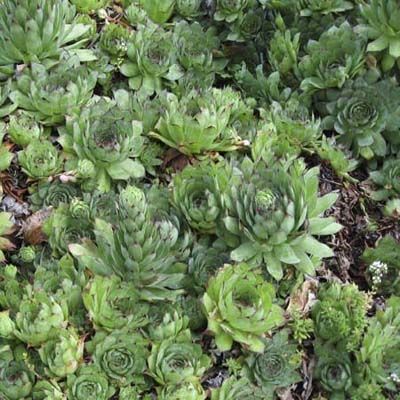
Sempervivum, commonly known as Hens and Chicks, are cold-hardy succulents that form tight rosettes. Sempervivum tectorum grows 3 to 4 inches in height, creating a carpet of green 2- to 5-inch-wide rosettes. These plants require full sun and are frost-tolerant, returning and multiplying year after year.
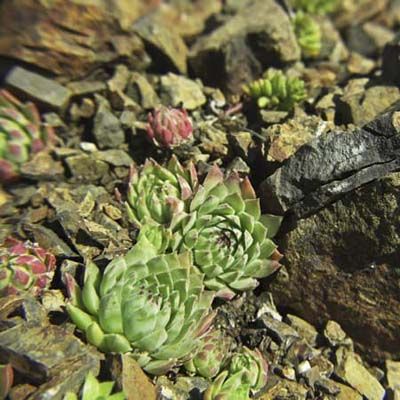
Sedum
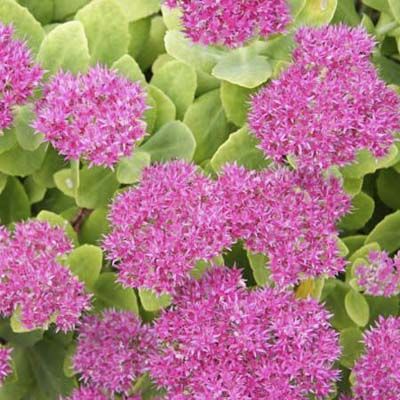
Sedum is a large genus of succulents that includes both low-growing and upright varieties. Sedum spectabile, also known as “Autumn Joy,” is a flowering succulent that features pink to rust-colored blooms against green, glossy, thick foliage in the summer. It can grow up to 2 feet tall and attracts bees and butterflies.
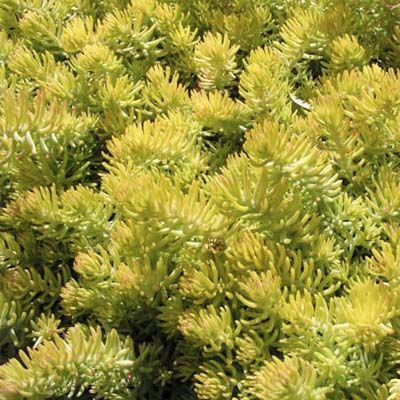
Agave
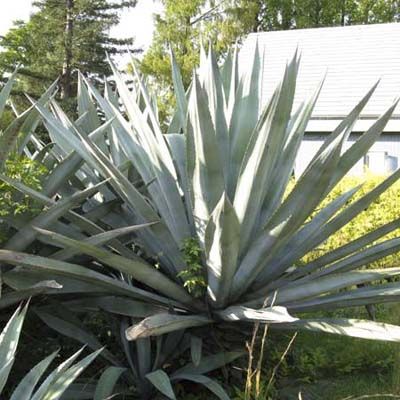
Agave plants are known for their large, dramatic rosettes of thick, pointed leaves. Agave americana features large blue-green leaf blades that can grow up to 6 feet long, with the entire plant measuring up to 12 feet across at maturity. These plants enjoy full sun but can also thrive in partial shade.
Delosperma (Ice Plant)
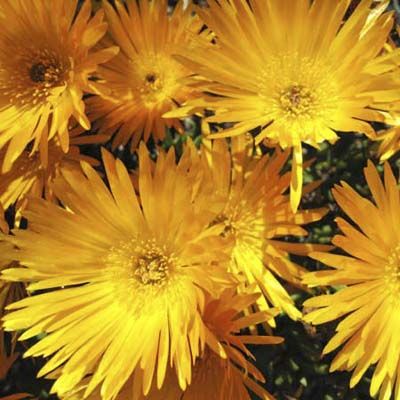
Ice plants are low-growing succulents that make excellent ground covers. Delosperma nubigenum ‘Yellow Ice Plant’ grows to about 6 inches and features bright yellow blooms against glossy, green foliage that turns red in winter. It’s a great option for adding color to rock gardens or sunny slopes.
Aeonium Arboreum (Black Rose)
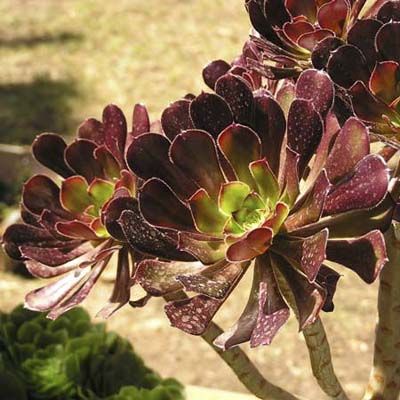
This striking succulent looks like a fantasy flower from another world with its thick, gray-brown stems topped with large, dark purple “petals” of foliage. In the summer, mature plants will sprout yellow blooms.
Delosperma Cooperi (Pink Ice Plant)
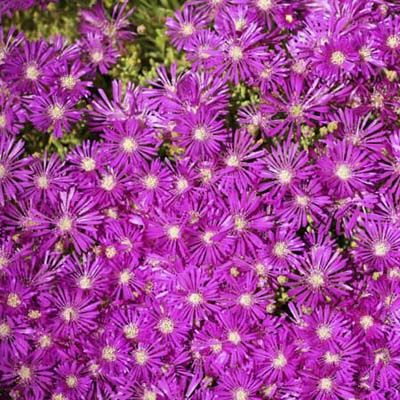
This smooth-textured succulent features showy bright pink blooms all summer long, against green, smooth-textured foliage. It grows to about 6 inches and makes an interesting groundcover.
Crassula Rupestris X Perforata (Baby Necklace)
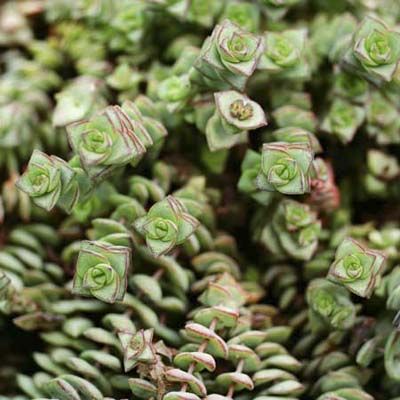
These feature disc-shaped, red-edged leaves that appear to be threaded on a thin stem. ‘Baby Necklace’ can be planted as a creeping groundcover, but will hang out of a basket nicely, too. Expect small white blooms in late spring-early summer. These can grow to 12 inches in sun-partial shade.
Sedum Spurium (Purple Carpet)

This variety of the two-row stonecrop grows to a 6-inch-high ground cover. In the summer, expect pink blooms against red-green stems and foliage.
Succulent Care
Succulents are among the easier plants to care for as they require minimal watering.
Most succulents prefer bright light, and many species enjoy full sun. However, some varieties, especially those with vibrant colors, may need protection from intense afternoon sun. For optimal growth, indoor succulents should be placed near a sunny window.
Watering Techniques
The key to watering succulents is to allow the soil to dry out completely between waterings. When you do water, do so thoroughly until water drains from the bottom of the pot. Reduce watering frequency during the plant’s dormant season, typically in winter.
Soil and Potting Needs
Succulents require well-draining soil to prevent root rot. A mix of half organic matter and half sandy, gritty material creates ideal growing conditions. Porous terra cotta containers are excellent choices for succulents as they allow excess moisture to evaporate.
Temperature and Humidity
Succulents generally prefer warmer temperatures and low humidity. Most species thrive in temperatures between 60°F and 80°F. While they can tolerate higher temperatures, extremely cold conditions can damage or kill these plants. In winter, protect outdoor succulents from frost by covering them or bringing potted plants indoors.
Propagating Succulents
Succulents are easy to propagate. Here are three common methods:
Leaf Cuttings
For succulents with fleshy leaves, such as Echeveria, gently twist a leaf from the stem. Allow the cut end to callus over for a few days, then place it on well-draining soil. Roots and a new plant will eventually grow from the base of the leaf.
Stem Cuttings
For plants with a branching habit, cut a stem segment and remove the lower leaves. Allow the cut end to dry for a day or two, then plant it in well-draining soil. Keep the soil slightly moist until roots form.
Offsets and Pups
Many succulents, like Sempervivum and aloe, produce small offsets or “pups” around the base of the parent plant. These can be carefully separated and replanted to create new plants.
Common Succulent Problems and Solutions
While succulents are generally easy to care for, they can still encounter issues. Here are some common problems and how to address them:
Overwatering
Overwatering is the most common problem with succulents. Signs include yellowing leaves, soft or mushy stems, and leaf drop. To fix this, reduce watering frequency and ensure your pot has adequate drainage.
Pest Infestations
Mealybugs and spider mites can sometimes infest succulents. Treat affected plants with insecticidal soap or neem oil, and isolate them from other plants until the infestation is under control.
Etiolation (Stretching)
When succulents don’t receive enough light, they may become elongated and “stretched out” in search of more light. To prevent this, ensure your plants receive adequate sunlight or consider using grow lights for indoor succulents.
Root Rot
Root rot is often caused by overwatering or poor drainage. Symptoms include black, mushy roots and a foul smell. To remedy this, remove the affected roots, let the plant dry out, and repot it in fresh, well-draining soil.
